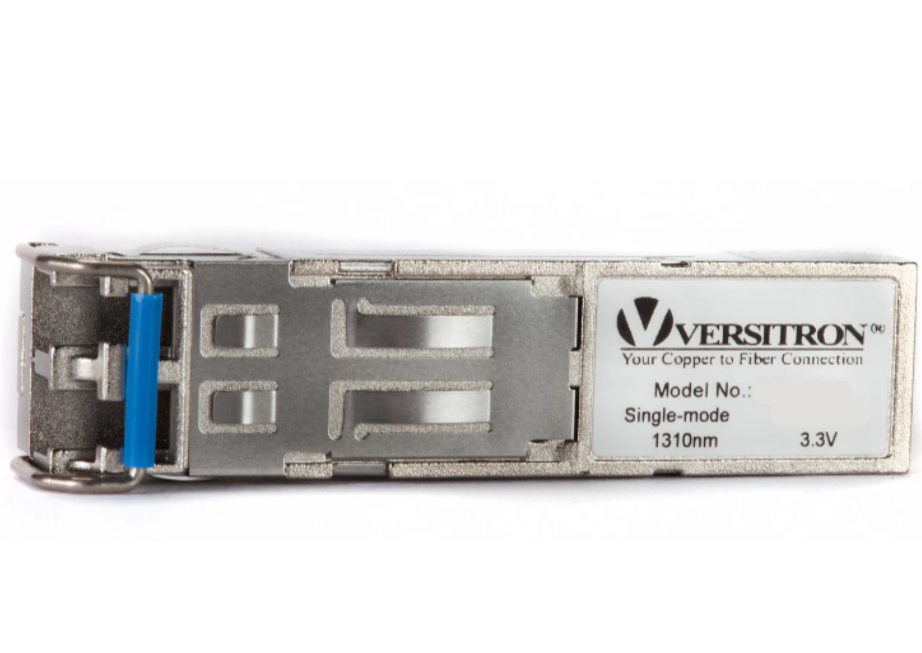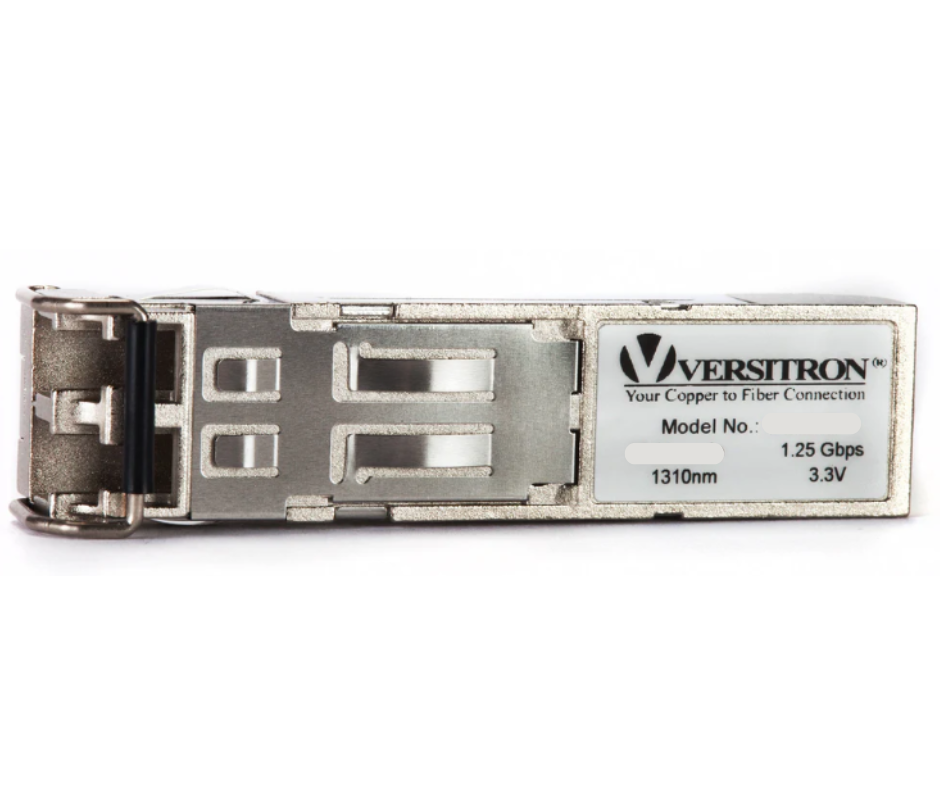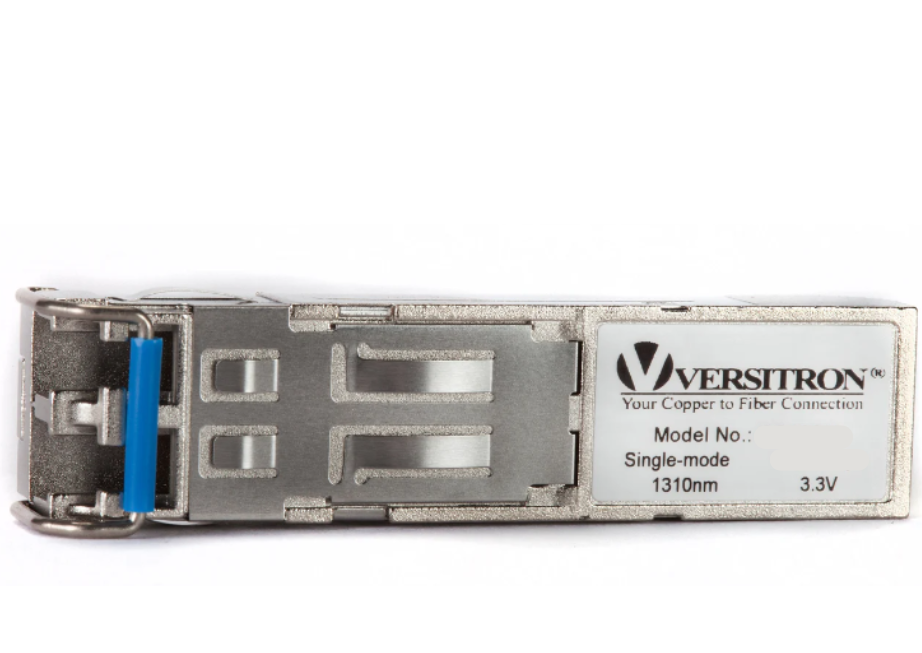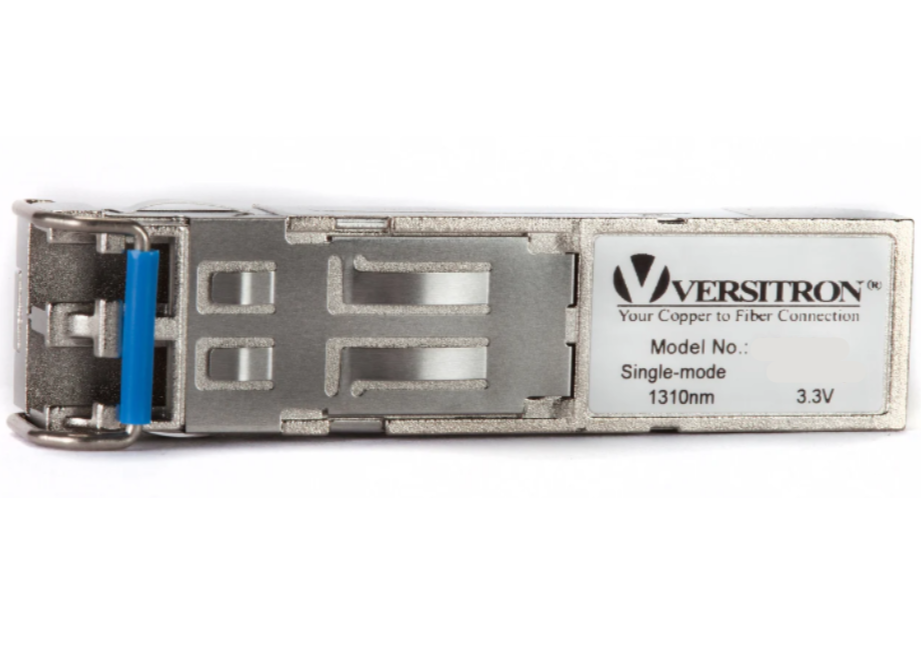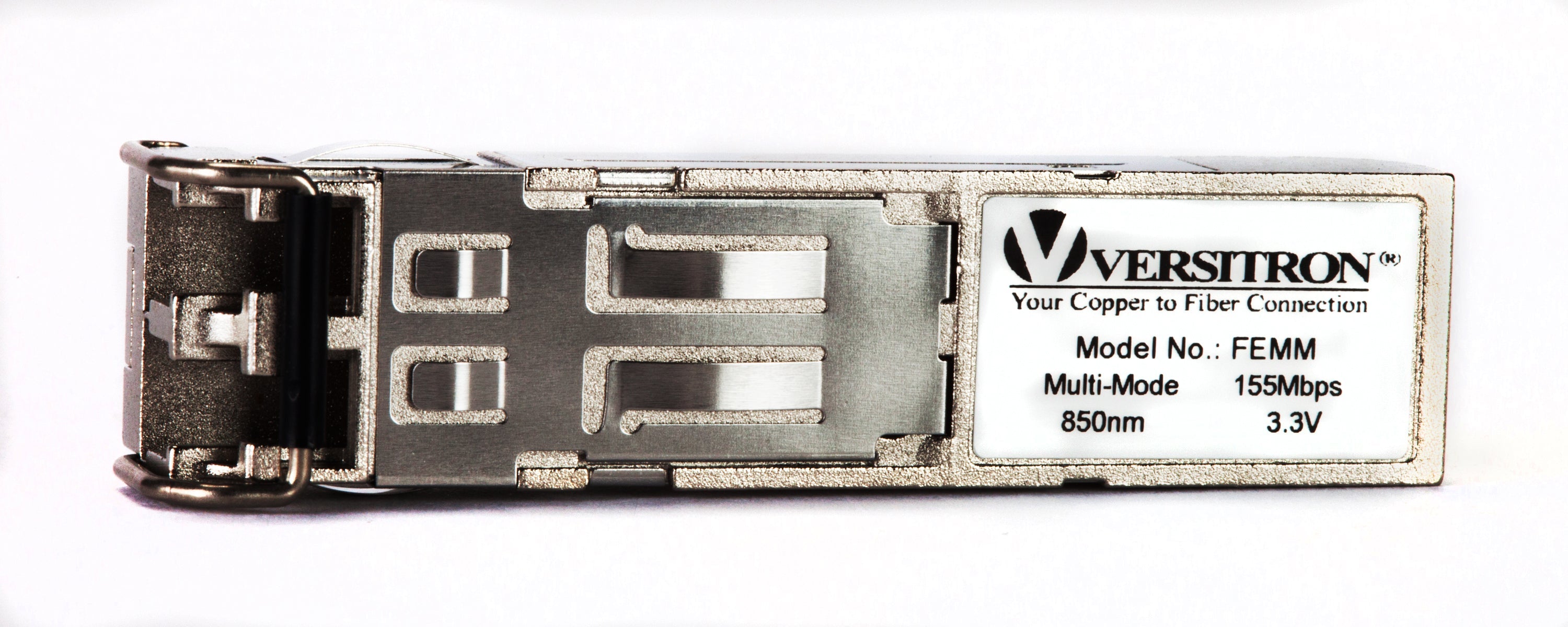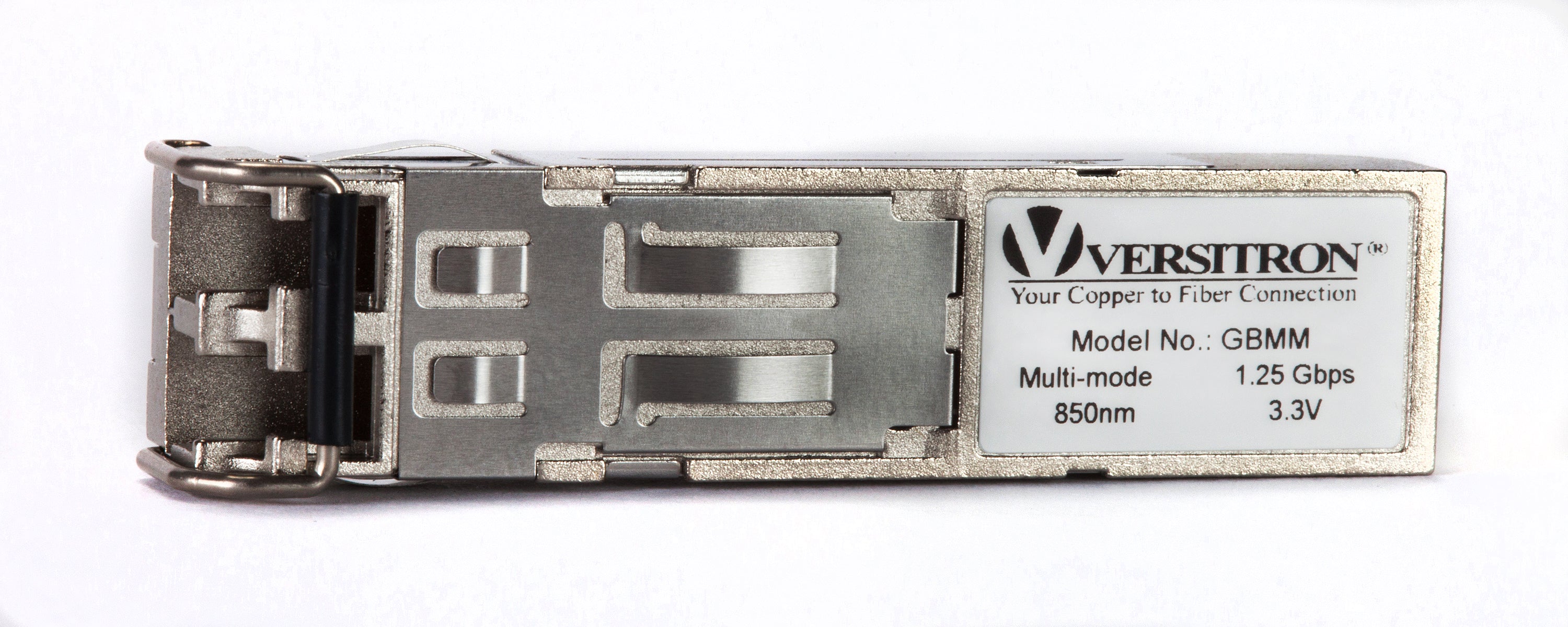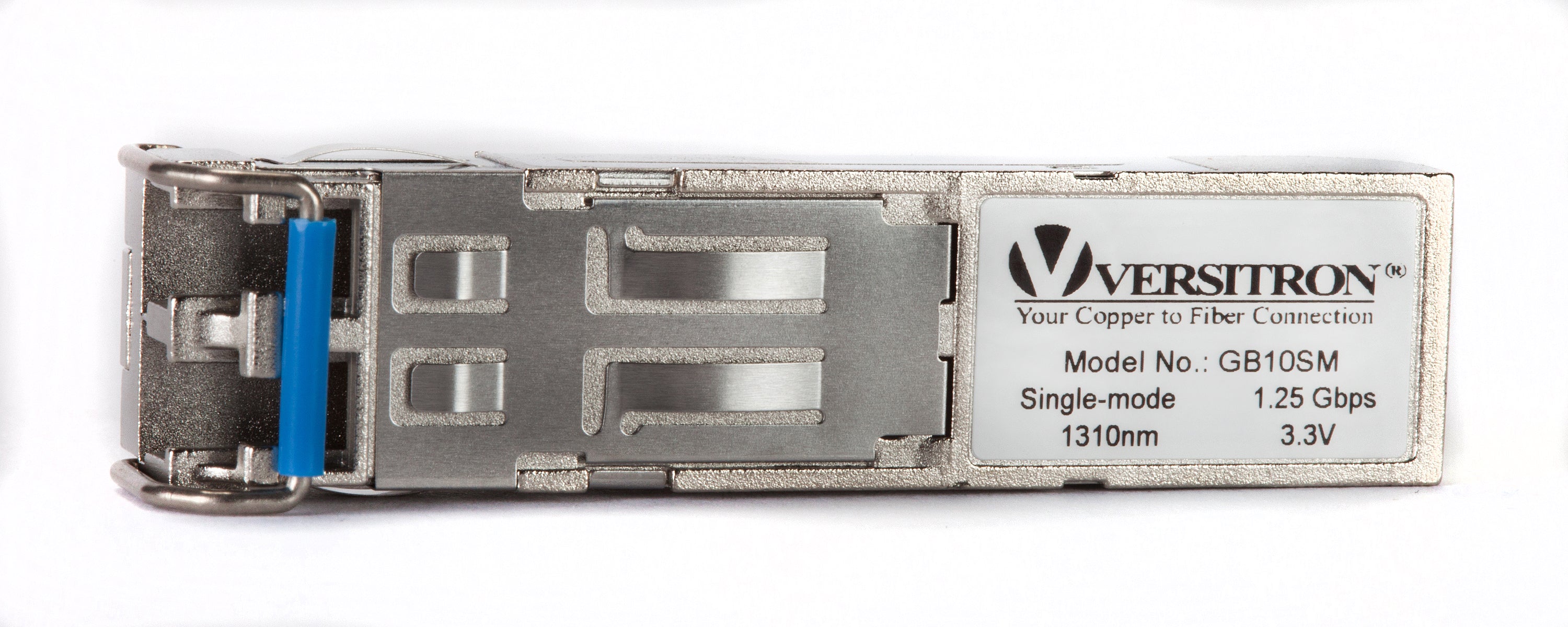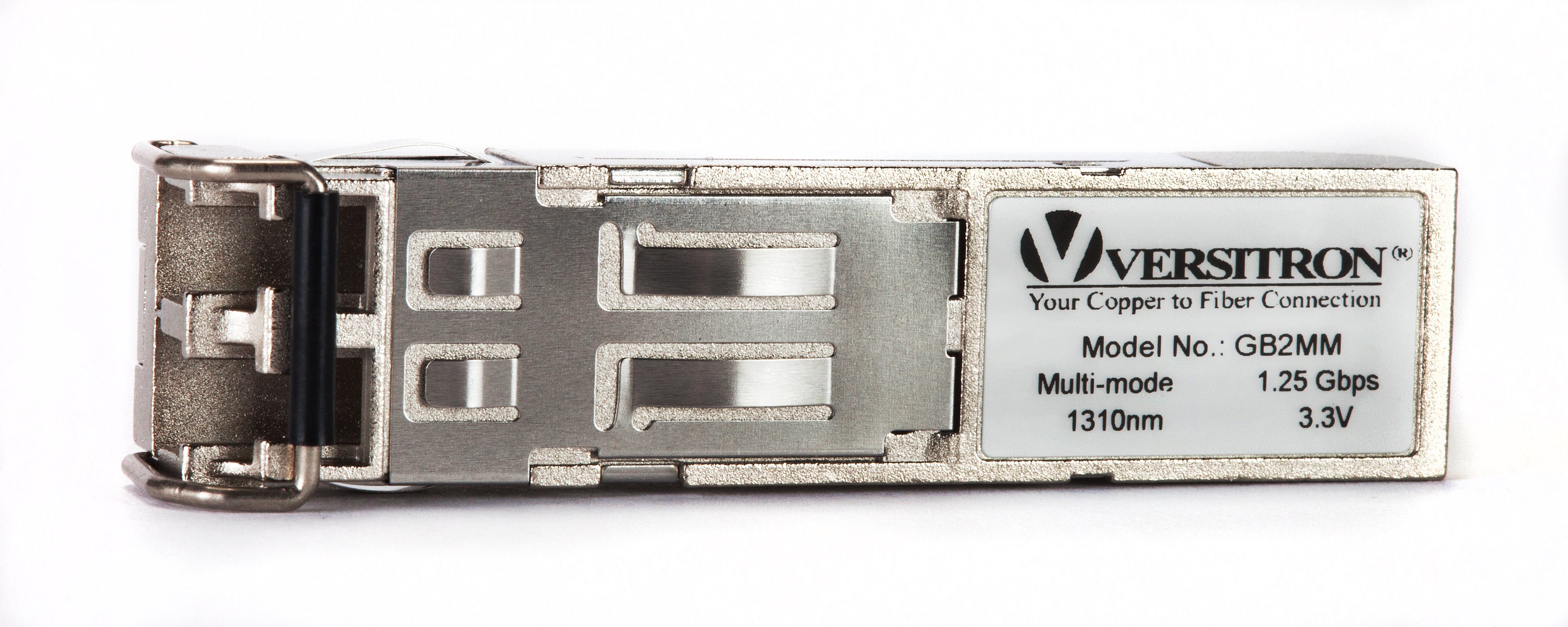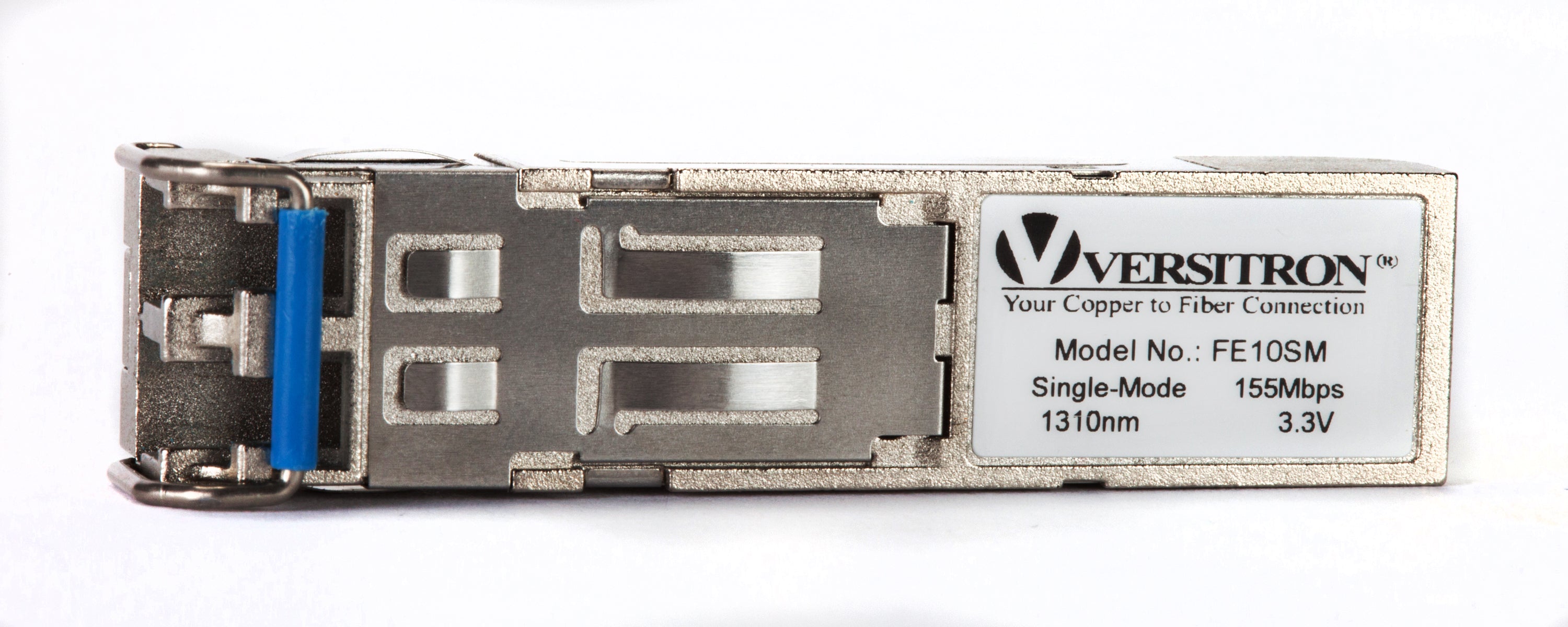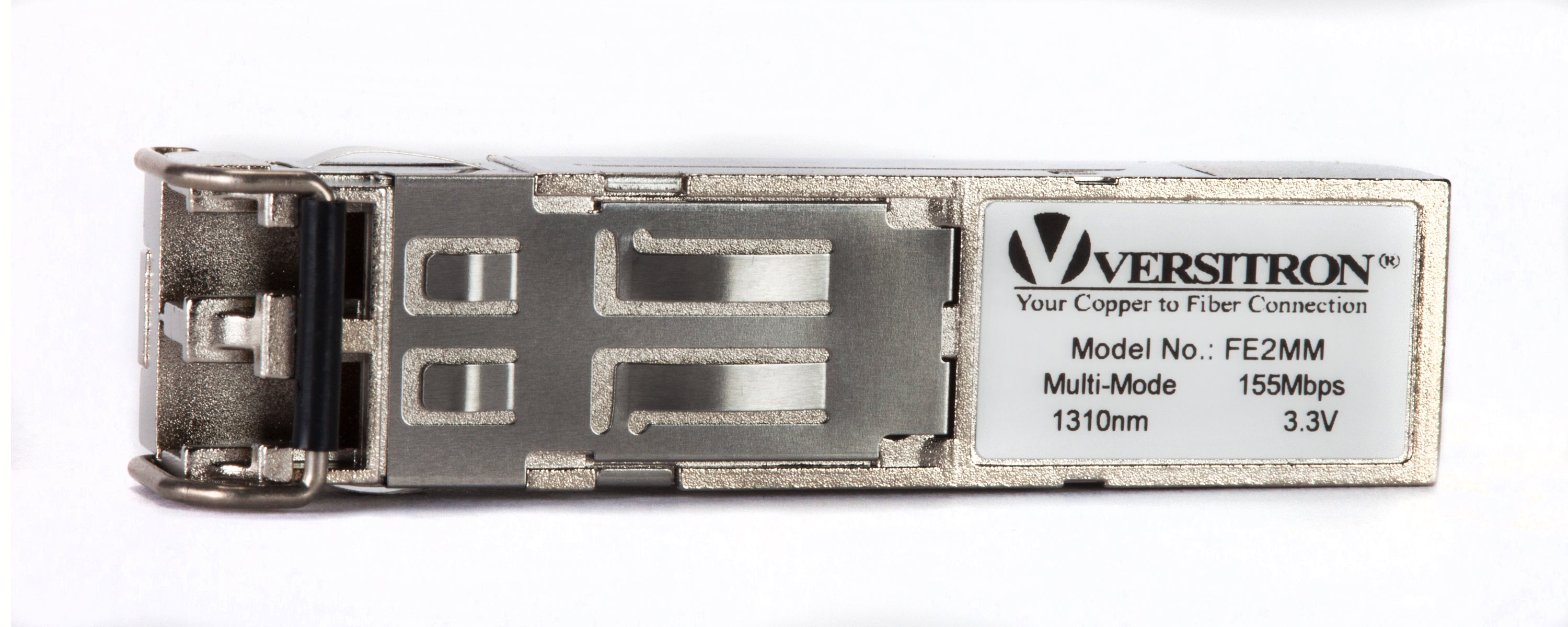Table of Contents
- What is an SFP Module?
- How Does an SFP Module Work?
- SFP Module Types
- How to Choose the Right SFP Module
- Why Use SFP Over Fixed Fiber Types?
- SFP Cable Types
- Standard SFP Wavelengths
- Configuring SFP Modules for Different Applications
- Understanding SFP Compatibility Issues
- How to Troubleshoot SFP Module Issues
- Best Practices for SFP Module Maintenance
- Industry Standards for SFP Modules
Also read: SFP Transmit Power Range
What is an SFP Module?
Small Form-factor Pluggable (SFP) module is a compact, hot-swappable transceiver used for both telecommunication and data communication applications. It plugs into a network device's port, such as a switch, router, or media converter, and converts electrical signals into optical signals or vice versa. In this blog post, we will explore all about SFP modules.
In this blog post, we will explore all about SFP modules.

How Does an SFP Module Work?
An SFP module works by transforming electrical signals from network devices into optical signals for transmission over fiber optic cables and vice versa. It contains a transceiver with both laser diode transmission capabilities as well as photodetector receiver capabilities.
Due to their diminutive size, small form factor pluggable modules (SFFPMs) have quickly replaced older GBIC modules in many applications due to their increased reliability in restricted networking environments, facilitating quick data communications between switches and critical networking components.
Also read: What is SFP Port
Different types of SFP Modules
Different types of SFP modules can be categorized based on criterias transmission medium and different versions such as:
Copper SFP vs Fiber SFP
SFP modules can operate over both optical fiber and Ethernet cables, leading to the two main types: fiber SFP and copper SFP.
- Copper SFP: These use copper cables for data transmission and are typically used for short-range connections.
- Fiber SFP: These use fiber optic cables for data transmission. Fiber SFPs can be further divided into two subtypes:
- Single-mode Fiber SFP: Designed for single-mode fiber optic cables.
- Multi-mode Fiber SFP: Designed for multi-mode fiber optic cables.
When comparing Single-mode SFP vs. Multimode SFP, Single-mode SFPs are used for long-range fiber optic communication, while Multimode SFPs are suited for short-range fiber optic communication.
SFP Module Based on Versions
Small form factor pluggable module have evolved over time, resulting in newer versions with technological advancements. The different versions include Basic SFP, SFP+, XFP, QSFP, and QSFP+.
Let's delve into each versions in detail, including their cable type, transmission range, data transfer rate, and application.
| Feature | SFP | SFP+ | XFP | QSFP | QSFP+ |
|---|---|---|---|---|---|
| Cable Type | Ethernet, Fiber Optic (OM1, OM2, OS1, OS2), Copper (UTP) | Fiber Optic (OM3, OM4, OS1, OS2), Copper | Fiber Optic (OM3, OM4, OS1, OS2) | Fiber Optic (OM3, OM4, OS1, OS2), Copper | Fiber Optic (OM3, OM4, OS1, OS2), MTP/MTO |
| Transmission Range | Multimode: 100m-500m, Single mode: 2km-200km | Up to 120km | Up to 120km | Up to 80km | Up to 40km |
| Transfer Rate | Up to 4.25 Gbps | 10 Gbps to 25 Gbps | 6, 8.5, or 10 Gbps | 103-112 Gbps | 40 Gbps to 100 Gbps |
| Connector Type | LC, SC (fiber optic), RJ-45 (copper) | LC (fiber optic), RJ-45 (copper) | LC (fiber optic) | LC, MTP/MPO-12 | LC, MTP/MPO |
| Applications | HD audio/video transmission, FDDI, PON | 10 Gigabit Ethernet, Fiber Channel, high-speed network applications | SONET, OTU-2, parallel optics networks, 10-Gigabit Ethernet | Data centers, high-speed networking, fiber channel storage | HPC environments, scientific research, simulations, data analysis, 40/100 Gigabit Ethernet, InfiniBand |
How to Choose a Small Form Factor Pluggable Module?
Here are some factors you need to consider when choosing an SFP module:
- Check the module’s compatibility with the cable and the switch port. The abbreviations mentioned above will help determine this factor.
- Confirm if you require Multimode or Singlemode fiber optic modules.
- Make sure it meets the IEEE standards.
- Determine the distance or area that you need to cover. Depending on this, you would choose a short distance or long distance data transmission.
- What type of environmental factors do you need to take into account? Consider the operating temperatures in your application and choose accordingly.
- Aside from the operating temperature range, do check for features such as electrostatic discharge protection.

Why Use SFP Over Fixed Fiber Types?
SFP modules offer flexibility that fixed fiber connections cannot. They support various fiber types and data rates while being easily hot-swapped to accommodate network upgrades with no downtime; for instance, switching from Fast Ethernet SFPs to Gigabit SFPs simply by swapping modules is possible without impacting performance or cost. Such adaptability makes SFPs cost-effective solutions in dynamic network environments.
SFP Cable Types
- Multimode Fiber (MMF): Uses LED light, cost-effective, ideal for short distances (up to 550m at 10Gbps).
- Single-Mode Fiber (SMF): Uses laser light, higher cost, suitable for long distances (up to 160km).
- Copper (UTP) Cables: Requires CAT5e or better, often used for short-range applications.
Standard SFP Wavelengths
SFP modules operate at different wavelengths depending on their type:
| Feature | SFP | SFP+ | XFP |
|---|---|---|---|
| Cable Type | MMF, SMF, Cat | MMF, SMF | MMF, SMF |
| Wavelength | 850nm, 1310nm, 1550nm | 850nm, 1310nm, 1550nm | 850nm, 1310nm, 1550nm |
| Compatibility | Media converters, PoE switches | Managed media converters | Managed media converters |
| Connector | LC | LC | LC |
Configuring SFP Modules for Different Applications
Configuring SFP Modules for Different Applications
- Data Centers: Multimode SFPs should be utilized for short range transmission
- Wide Area Networks (WANs): Single mode SFPs are best suited for long distance communication in Wide Area Networks (WANs).
Configuration steps include accessing the switch/router's command-line interface (CLI) and making appropriate adjustments:
- Port speed
- Duplex settings
- VLAN configurations
Understanding SFP Compatibility Issues
Small Form-factor Pluggable (SFP) transceivers come in many varieties, each designed for specific networking equipment. If mismatched SFP modules are used instead of compatible ones, compatibility issues arise that lead to connectivity problems or even hardware damage.
Data rate, wavelength and fiber type must all coincide with the network infrastructure. Furthermore, vendor lock-in and firmware restrictions may exacerbate compatibility issues.
To address these challenges, companies must conduct in-depth research, adhere to industry standards and consult network specialists. By understanding SFP compatibility details, businesses can ensure efficient data transmission while upholding network reliability.
How to Troubleshoot SFP Module Issues?
Troubleshooting SFP Module Issues Network administrators and engineers need the ability to effectively troubleshoot SFP (Small Form-Factor Pluggable) module issues quickly in order to maintain network performance. Fiber optic modules play a vital role in network infrastructure; when problems arise with these vital elements of infrastructure, timely identification and resolution must occur to keep performance optimal.
Here's an explanation of how to troubleshoot SFP module issues:
- Identify the Problem: To begin troubleshooting SFP module issues, first identify any specific symptoms you are experiencing such as loss of connectivity, erratic behavior or degraded network performance. Gather details regarding when this started happening as well as any changes made recently that might have contributed to it, along with which devices have been affected.
- Visual Inspection: Begin your visual inspection of the module and its surroundings by looking for physical damage, loose connections or obstructions in its optical path. Ensure that its slot has not been compromised during installation.
- Check Indicator Lights: SFP modules typically feature indicator lights (LEDs) which provide status information about them. Be on the lookout for any odd patterns or error codes displayed by these LEDs and consult your module's documentation in order to interpret this status information.
- Clean Optical Interfaces: Dust and contaminants on optical connectors can significantly degrade signal. Use special tools and solutions to thoroughly clean both the optical interface of an SFP module as well as its respective port on networking equipment.
- Verify Compatibility: Before installing new network equipment, ensure its compatibility. Mismatched data rates, protocols or connectors could lead to communication problems; consult both device documentation and module specifications for compatibility information.
- Swap Modules: Swapping the suspected SFP module with one that works can help determine if the issue lies with its functionality or other parts of your network.
- Inspect Fiber Cabling: When using fiber SFPs, be sure to inspect their fiber cabling carefully for signs of bends, breaks or damage - even minor imperfections could lead to signal loss - replacing or repairing as necessary.
- Update Firmware or Drivers: Confirm if your networking equipment requires firmware or driver updates to accommodate an SFP module. Outdated firmware could lead to compatibility issues; make the necessary updates as required.
- Check Configuration Settings: Review the configuration settings of both networking equipment and SFP transceivers to make sure they meet your desired operation, including speed, duplex and VLAN tagging options.
- Monitor Performance: Utilize network monitoring tools to gauge the performance of an SFP module in its affected network segment, looking out for error logs, packet loss or abnormal traffic patterns which may help identify an issue.
- Consult Documentation and Support: Refer to the documentation provided by the SFP module manufacturer and the networking equipment vendor for troubleshooting guidance. If the problem persists, consider reaching out to technical support for assistance.
- Replace Faulty SFP Modules: If all troubleshooting efforts fail and it's determined that the module is faulty or malfunctioning, replace it with a new one. Ensure that the replacement module is compatible and properly configured.
Please allow VERSITRON to help ensure that your network is functioning in an optimal fashion. If you need to extend or install fiber optic components within your network, let us put our six plus decades of experience in the industry to work for you! VERSITRON is a well-known manufacturer of Bidirectional SFP modules, fiber optic media converters, network switches and much more!
Best Practices for SFP Module Maintenance
To ensure optimal performance and extend the lifespan of SFP modules:
- Keep them clean: Dirt and debris can significantly reduce performance and cause signal loss, so use fiber cleaning tools and store any unused modules in anti-static bags for safekeeping.
- Document usage: Make a note of when connectors were installed, removed and replaced to monitor lifespan and anticipate replacement needs.
- Inspect regularly: To avoid signal degradation check connectors regularly for dust accumulation or damages such as corrosion.
- Monitor performance: Utilize network diagnostic tools to track signal strength and identify potential failures before they happen.
- Avoid excessive handling: Overexerting yourself could wear out connectors; only replace modules when absolutely necessary.
Industry Standards for SFP Modules
SFP modules must adhere to industry standards to ensure compatibility and performance across various network environments. Some of the key standards include:
- IEEE 802.3: Defines Ethernet networking standards, including support for different SFP data rates and transmission distances.
- MSA (Multi-Source Agreement): Ensures interoperability between SFP modules from different vendors.
- SFF-8472: Specifies digital diagnostics monitoring (DDM) capabilities for SFP transceivers, allowing real-time performance monitoring.
- RoHS Compliance: Ensures that SFP modules meet environmental safety standards by limiting hazardous substances.
FAQs
SFP modules are flexible components widely used in networking equipment like switches and routers. They support multiple media types, including fiber optic and copper cables, enabling flexible connectivity options.
Yes, SFP+ enables data rates compared to SFP. Typically, SFP can handle speeds, up to 1 Gbps while SFP+ supports speeds of 10 Gbps or more.
- SFP modules are used to facilitate high-speed communication between switches and network components such as routers and other devices.
- It is mainly used with copper or fiber optic cables.
- Its small form factor makes it ideal for areas that may not be very accessible.
- Compatible with duplex Multimode or Singlemode fiber optic cable as well as simplex cables.
- Supports wavelengths up to 1310nm for Multimode and 1550nm for Singlemode.
- Newer versions of SFP such as SFP+ have been developed which offer very high speeds up to 10Gbps.
- Versatility: SFP modules support various data rates and connection types, offering flexibility in network design.
- Space Efficiency: Their small size allows for higher port density in networking equipment, saving physical space.
- Energy Efficiency: SFP modules consume less power, reducing energy costs and environmental impact.
- Hot-Swappability: Easy replacement without network downtime for maintenance or upgrades.
- Compatibility: Works with diverse networking equipment, promoting interoperability.
- Cost-Effective Upgrades: Enables network speed and capacity upgrades without replacing entire devices.
- Broad Application: Used in data centers, telecom, and enterprise networks, making them indispensable in various industries.
When it comes to connectivity options SFP modules provide versatility by accommodating media types, like fiber optic and copper cables. They also allow for transmission distances. Can be swapped out seamlessly without disrupting network activities.
No, While SFP ports are specifically tailored for SFP modules RJ45 ports are commonly used for Ethernet connections. In some cases, adapters may be utilized to convert SFP ports into RJ45 connections.
SFP (Small Form-Factor Pluggable) modules are smaller and more versatile than GBIC (Gigabit Interface Converter) modules, allowing for higher port density and flexibility in networking equipment.
SFP and SFP+ modules are typically not directly interoperable due to differences in data rates but some networking devices support both with appropriate configuration.


